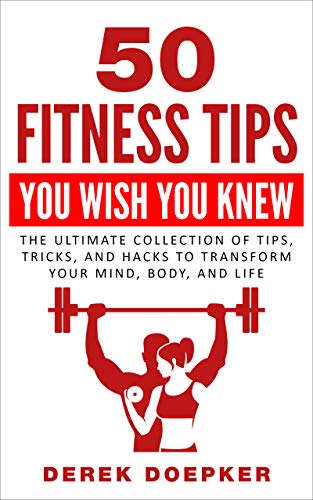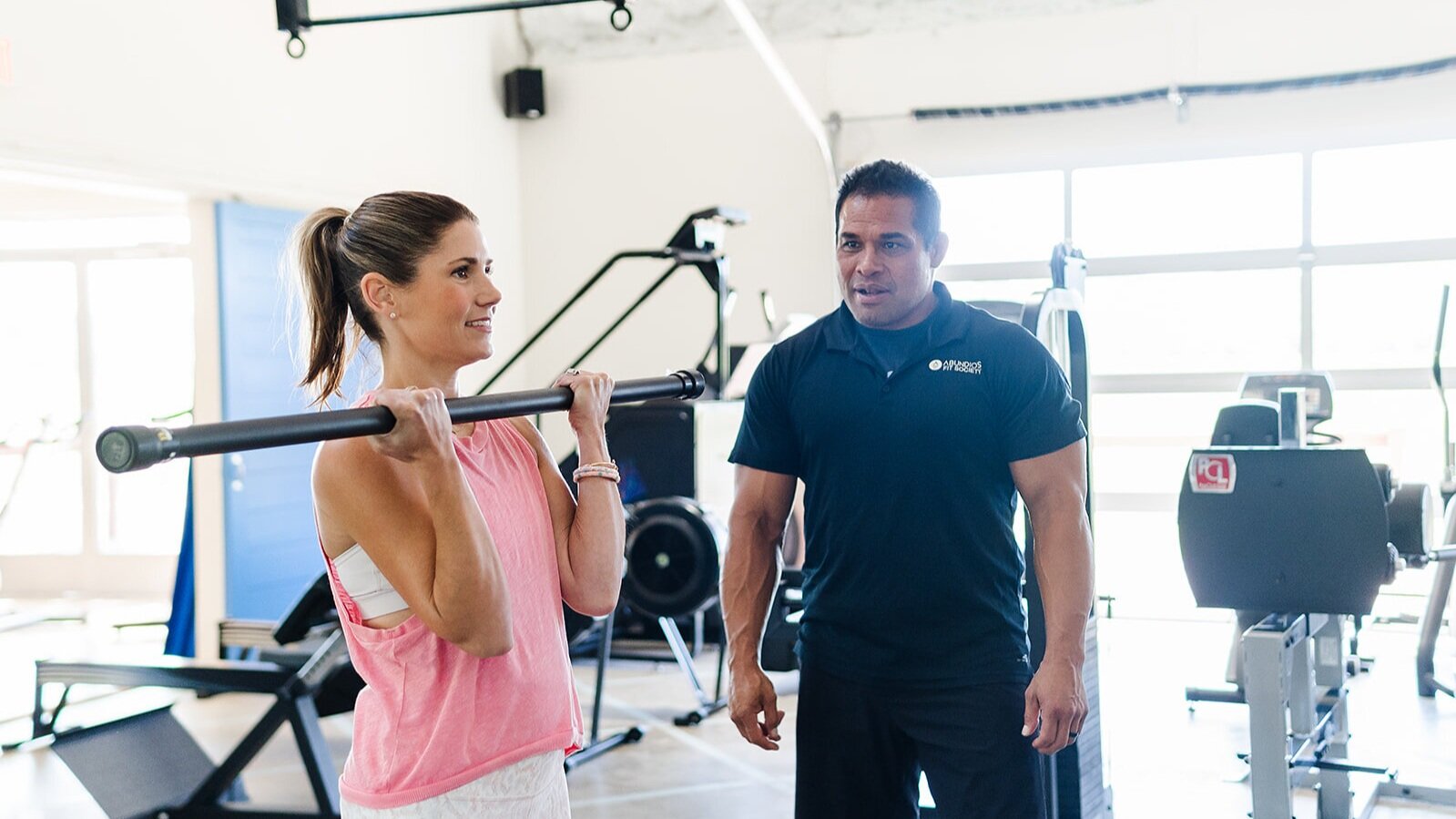
The most effective strength training workouts should focus on the fundamental compound movements of squats/deadlifts and bench presses. You can add weight but focus on form. This is why it's so important to learn how to do bodyweight moves properly before adding weight. You can do the press-up in a short time and with minimal space. It is a good value for money.
Compound lifts are the best way to build strength. They require proper form and can be difficult to do. Although there are many exercises that can help increase strength and muscle mass, these are the most important. You can use your body weight and a dumbbell if you don't have weights. Doing this will even out your strength imbalances and allow you to work your weaker side independently. This is how you can improve your strength and fitness.

Start with a bodyweight dip if you aren't sure what to do. This will give you the strength to lift heavier, lower-body weights. You could also do a bench press with a barbell. A basic benchpress with barbells is a great exercise to strengthen your back. StrongWomenUK's Instagram account will help you decide which exercises are best for you.
Once you have done the basic pushups and sit ups, you can move onto more challenging exercises like barbell step-ups (or standing overhead presses) Cycling is great for building muscle. However, it's important to warm up before you cycle and then cool down afterwards. A simple morning run will do wonders for your strength. There are many other ways to improve your flexibility. These tips will make it easy to start your strength-training program.
The best exercises for building strength in women are the same as those for men. Depending on your goals, you can choose from 8 to 10 different exercises. It's best to concentrate on one exercise for each muscle group, especially for beginners. Larger muscles may be able to handle multiple exercises, so it is up to you which ones are most effective for you. Ask your trainer for help if you aren't sure which exercises to do.

Starting strength training may seem daunting at first. If this is your first time, it may seem daunting. This can be difficult, but it will become easier as you gain the necessary skills to train properly. The key is to know what you're doing and how to do it safely. JC's Total Body Transformation program will help you reach your goals in a matter of months.
FAQ
These are 5 ways you can live a healthy and happy life.
A healthy lifestyle means eating right, being active, getting enough sleep, managing your stress levels, and having fun. Good eating habits include avoiding processed foods, sugar, unhealthy fats, and avoiding junk food. Exercise strengthens your muscles and helps you lose calories. Sleeping enough can improve memory and concentration. Stress management can reduce anxiety and depression. Fun is key to staying young and vibrant.
What should I eat?
You should eat lots of vegetables and fruits. They provide vitamins and minerals to keep your immune system strong. Also, fruits and vegetables are rich in fiber. This makes them filling as well as helping with digestion. At least five servings of fruits and vegetables should be consumed each day.
Make sure you drink plenty of water too. Water flushes out toxins and helps you feel full between meals. Drink about eight glasses each day.
Choose whole grains over refined grains. Whole grains retain all nutrients including B vitamins, iron and zinc as well as calcium, magnesium, calcium, protein, and magnesium. Refined grains have been stripped of some of their nutrition.
Avoid sugary drinks. Sugary drinks are full of empty calories and lead to obesity. Instead, you can opt for water or milk, as well as unsweetened herbal teas.
Avoid fast food. Fast food lacks nutritional value. Fast food may be delicious, but it will not give you the energy that you need to perform your tasks properly. Choose healthier options like salads, soups and sandwiches as well as pasta dishes.
Limit your alcohol intake. Alcohol is a poor nutrient and has empty calories. Limit your consumption to no more than 2 alcoholic beverages per week
Reduce your consumption of red meat. Red meats are high in saturated fat and cholesterol. Opt for lean cuts of beef, pork, lamb, chicken, fish, and turkey instead.
Which lifestyle is best for your health?
Living a healthy lifestyle is one that encourages you to eat well, exercise regularly, get enough sleep, and avoids stress. You will live a long and happy life if you adhere to these guidelines.
Small changes to your diet or exercise routine can help you start losing weight. You can lose weight by walking 30 minutes each day if you are looking to lose weight. Or, if you want to get more active, take up swimming or dancing. An online fitness program such as Strava or Fitbit that tracks your activity could be a good option.
Is being cold bad for your immune system?
It has been said that there are two types of people on the planet: those who love winter, and those who don't. You might wonder why you feel so miserable in the cold, no matter how much you love or hate winter.
The reason is simple: Our bodies are made to function well in warm temperatures. In fact, we evolved to thrive in hot climates because that's where most of our food sources are located.
We live in a very different environment than our ancestors. We spend more time indoors and are often exposed to extreme temperatures (cold or heat) and eat processed foods rather than fresh.
Our bodies don't have the ability to tolerate extremes. So, when we do venture outside, we often feel exhausted, sluggish, or even sick.
However, there are ways to counter these effects. The best way to avoid these problems is to ensure that your body stays hydrated throughout the day. Drinking plenty of water will help you keep your body hydrated and flush out toxins.
Also, ensure you eat healthy food. The best way to maintain your body's optimal temperature is by eating nutritious food. This is especially true for people who spend long hours indoors.
It is worth taking a few extra minutes each day to meditate. Meditation helps you relax your mind and body, which makes it easier to deal with stress and illness.
Statistics
- WHO recommends consuming less than 5% of total energy intake for additional health benefits. (who.int)
- The Dietary Guidelines for Americans recommend keeping added sugar intake below 10% of your daily calorie intake, while the World Health Organization recommends slashing added sugars to 5% or less of your daily calories for optimal health (59Trusted (healthline.com)
- In both adults and children, the intake of free sugars should be reduced to less than 10% of total energy intake. (who.int)
- According to the 2020 Dietary Guidelines for Americans, a balanced diet high in fruits and vegetables, lean protein, low-fat dairy and whole grains is needed for optimal energy. (mayoclinichealthsystem.org)
External Links
How To
What does the term "vitamins" mean?
Vitamins can be described as organic compounds found in food. Vitamins are necessary for us to absorb nutrients in the foods we consume. Vitamins cannot come from the body so food must provide them.
Two types of vitamins exist: water-soluble vitamin and fat-soluble vitamin. Water-soluble vitamins dissolve easily when they are dissolved in water. Examples include vitamin C,B1 (thiamine), B2 (riboflavin), B3 (niacin), B6 (pyridoxine), folic acid, biotin, pantothenic acid, and choline. Fat-soluble vitamins can be stored in the liver or in fatty tissue. Some examples include vitamin D and E, K, A and beta carotene.
Vitamins can be classified according to biological activity. There are eight major categories of vitamins.
-
A - Essential for healthy growth and health maintenance.
-
C is important for nerve function and energy production.
-
D - Essential for healthy teeth and bones.
-
E - needed for good vision and reproduction.
-
K - required for healthy muscles and nerves.
-
P - Vital for strong bones and teeth.
-
Q - aids digestion and absorption of iron.
-
R – Required for the formation of red blood vessels.
The recommended daily intake (RDA), of vitamins varies with age, gender and physical condition. RDA values are set by the U.S. Food and Drug Administration (FDA).
For example, the RDA for vitamin A is 400 micrograms per dayfor adults 19 years or older. Pregnant mothers need 600 micrograms per days because it is vital for the development and growth of their baby. Children ages 1-8 require 900 micrograms per day. Infants under one year of age require 700 micrograms per day, but this amount decreases to 500 micrograms per day between 9 months and 12 months of age.
Children aged 1-18 years need 800 micrograms daily, while children overweight require 1000 micrograms per days. Children who are severely obese or underweight will need 1200 micrograms each day.
Children ages 4-8 years who have been diagnosed with anemia need 2200 micrograms per day of vitamin C.
2000 micrograms daily is required for adults over 50 to maintain their general health. Breastfeeding or pregnant women require 3000 micrograms per daily due to higher nutrient demands.
Adults over 70 need 1500 micrograms daily, as they lose 10% of their muscle every ten years.
Women who are pregnant or nursing need more than the RDA. Pregnant mothers need 4000 micrograms per daily during pregnancy and 2500 after giving birth. Breastfeeding mothers need to consume 5000 micrograms every day when breastmilk has been produced.